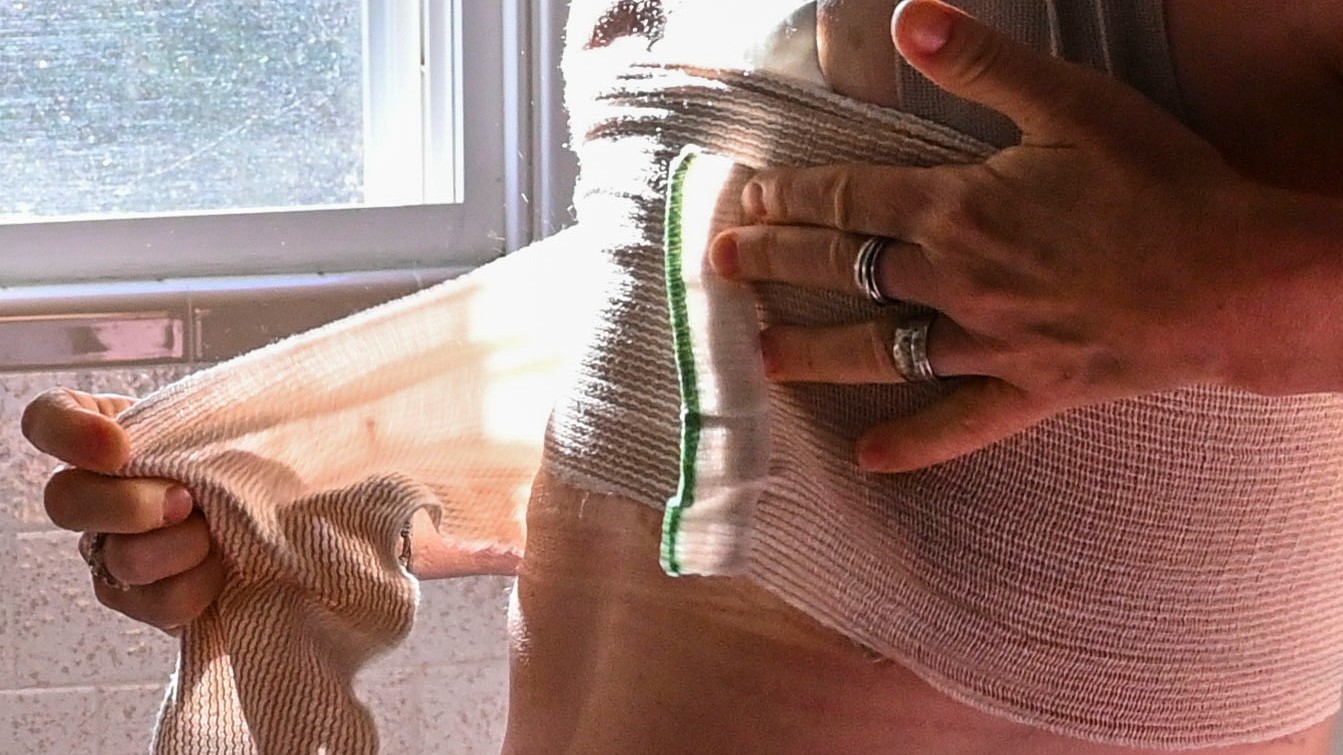Double mastectomies don't increase cancer survival, study suggests
Other types of surgery besides double mastectomies are equally good at lowering death rates in women with cancer in one breast.

Women with cancer in one breast have the option to have both breasts removed, as a precaution. However, new research finds that these patients are no less likely to die from breast cancer than women who have only the affected breast or the tumor inside it removed.
The recent study looked at data from more than 660,000 women of various ethnicities in a large U.S. cancer registry. The women were 58 years old, on average, and all had been diagnosed with unilateral breast cancer, meaning cancer in one breast.
Following diagnosis, each patient had one of three standard surgical procedures: a lumpectomy, to remove only the tumor in the affected breast; a unilateral mastectomy, to remove one breast; or a bilateral mastectomy, to remove both breasts. Otherwise, the women were matched in terms of the clinical features of their cancers.
Researchers tracked whether the women developed breast cancer in their remaining breast — a condition called contralateral breast cancer — over 20 years. This can also happen in people with double mastectomies because there's a chance some leftover breast tissue or cancer cells may recur on the chest wall. The risk of contralateral breast cancer happening is usually around 0.4% per year following a unilateral breast cancer diagnosis.
Related: 'Bionic breast' could restore sensation for cancer survivors
The team also recorded whether any of the women died from breast cancer during this follow-up period.
Overall, women who'd had a double mastectomy had a statistically significant, lower risk of developing contralateral breast cancer than the other groups (0.7% versus 6.9%). However, there was no statistically significant difference in overall death rates between groups — these were 16.3% for lumpectomies and 16.7% for both types of mastectomy.
Sign up for the Live Science daily newsletter now
Get the world’s most fascinating discoveries delivered straight to your inbox.
This similarity showed up despite the fact that the patients who developed contralateral breast cancer had more than twice the risk of dying than those who didn't (32.1% compared to 14.5%).
A possible explanation for this seemingly counterintuitive finding is that the original tumor is the predominant driver of deaths in these patients, rather than contralateral breast cancer, said Dr. Seema Khan and Masha Kocherginsky, cancer researchers from Northwestern University in Illinois who were not involved in the research.
Patients are diagnosed with their original tumor at a younger age, when the risk of breast-cancer death is higher, and they're treated with "older, less effective regimens," they wrote in an accompanying editorial. For these reasons, the risk of death from contralateral breast cancer may be lower than that from the original tumor. That's especially true "if second cancers are diagnosed at earlier stages in survivors who tend to be more adherent to posttreatment screening," they added.
Therefore, reducing the risk of contralateral breast cancer wouldn't necessarily affect overall survival rates for breast cancer.
These new findings were described in a paper published July 25 in the journal JAMA Oncology. They confirm trends that other research have previously shown but with a larger sample size and a longer follow-up period, the authors said.
Ultimately, though, the decision to have a double mastectomy is extremely personal.
"We are grateful that in 2024, women have options for treating breast cancer," which have equal survival rates, Dr. Mehra Golshan, a cancer surgeon at Yale School of Medicine who was not involved in the research, told Live Science in an email.
"Developing a contralateral breast cancer is very traumatic and for some women, removing that second breast is reassuring and they won't have to undergo routine screening," Vasily Giannakeas, lead study author and an epidemiologist at the Women's College Hospital Research Institute in Canada, told Live Science. For others, it may increase their confidence by enhancing the symmetry of their chest. Usually patients are given the choice as to whether they'd also like to have breast reconstructive surgery after a mastectomy.
"What is important is that clinicians support women to make an informed choice about this issue, after they have all the facts," said Dr. Lynda Wyld, a professor of surgical oncology at the University of Sheffield in the U.K. who was not involved in the research. "Papers like this are very valuable in helping clinicians advise their patients about the risks and benefits of this type of surgery," Wyld told Live Science in an email.
This article is for informational purposes only and is not meant to offer medical advice.
Ever wonder why some people build muscle more easily than others or why freckles come out in the sun? Send us your questions about how the human body works to community@livescience.com with the subject line "Health Desk Q," and you may see your question answered on the website!

Emily is a health news writer based in London, United Kingdom. She holds a bachelor's degree in biology from Durham University and a master's degree in clinical and therapeutic neuroscience from Oxford University. She has worked in science communication, medical writing and as a local news reporter while undertaking NCTJ journalism training with News Associates. In 2018, she was named one of MHP Communications' 30 journalists to watch under 30. (emily.cooke@futurenet.com)









